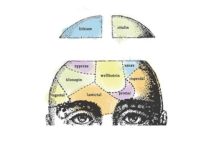A new study published in the Journal of Affective Disorders finds that antidepressant use is linked to osteoporosis and fractures in adult women.
The research, led by Humam Emad Rajha and Reem Abdelaal of Qatar University, found that antidepressant use—regardless of the type of medication—was associated with a 44% increased risk of developing osteoporosis and a 62% higher risk of fractures. The longer a woman took antidepressants and the more antidepressants she used simultaneously, the greater the risk.
Past research has shown that women are more likely to be prescribed antidepressants than men, often even when they do not report symptoms of depression. As women age, they are also at greater risk of osteoporosis. Given the well-established connection between antidepressants and lower bone mineral density, the authors emphasize the need for careful consideration of bone health risks when prescribing these drugs to women.
“We found that the use of any antidepressant, regardless of class, increased the odds of osteoporosis by 44 % with strong evidence against the model hypothesis for this sample size. Our findings suggest that osteoporosis is an important adverse effect of antidepressant medications. Although the existing evidence on this association is limited, our findings are corroborated by previous other studies conducted in the US, Canada, and Australia that supported the same conclusion: patients using antidepressants were associated with having lower bone mineral density scores than their counterparts.”
This study underscores the long-term physical consequences of psychotropic medication, particularly for women, who are disproportionately prescribed antidepressants. The findings challenge the assumption that these drugs are benign and highlight how biological risks—such as osteoporosis and fractures—are overlooked in favor of symptom management. It raises pressing questions about the ethics of overprescription, the neglect of non-medical interventions, and the broader consequences of a system that prioritizes pharmacological solutions over holistic, person-centered care.















Yes. Hormones are not as frequently prescribed for menopause symptoms now, and antidepressant drugs are often suggested instead.
Report comment
I wish they’d had a way to control for vitamin D insufficiency. That will ruin your bones and affect your mood, but how often does anyone check D levels before diagnosing depression or treating it with antidepressants?
Report comment
SSRIs decrease calcium and vitamin D and increase homocysteine. High levels of homocysteine in the blood can weaken bones by increasing bone resorption and reducing bone formation. Homocysteine can also damage bone quality by disrupting collagen fibers.
Report comment
So, SSRI’s weaken bones. Great incentive for pharmaceutical companies to sell both SSRI’s and “medicines” for osteoporosis.
Take note: there’ll soon come a time when more debilitating conditions/illnesses are caused by pharmaceuticals than are helped by them.
Report comment
SSRI’s are weakening men’s bones, at least the one in the pants, and SSRI’s are also weakening men and women’s brains. So SSRI’s weaken your bones and brains. If you put that on the medical insert then I think people might finally start thinking twice about them.
Report comment
One can only hope.
Report comment
I love how they ask a question when it is about females when they KNOW the answer is ‘yes’ by the research. But much like assault and anything else related to women wording is ALWAYS altered to suggest doubt. ALWAYS DOUBT
“The research, led by Humam Emad Rajha and Reem Abdelaal of Qatar University, found that antidepressant use—regardless of the type of medication—was associated with a 44% increased risk of developing osteoporosis and a 62% higher risk of fractures. The longer a woman took antidepressants and the more antidepressants she used simultaneously, the greater the risk.”
And then our doctors will take decades ignoring us and more time wasted making us take and retake tests to prove our ailments then to prove the previous result was valid and again and again ANYTHING to NOT allow us to actually BE but rather bathe us in doubt so we stink of it at every interaction in cycles of gaslighting that just really never end anymore. But hey! Obviously that hasn’t been enough because now we are openly being hunted and stripped of our humanity AND NO ONE CARES ENOUGH TO STOP IT EVEN OTHER WOMEN. And where are we being herded? Into mental health facilities and prisons where they will MEDICATE US AGAINST OUR WILL and deny us when our bones are fracturing and we are in chronic pain….
Report comment